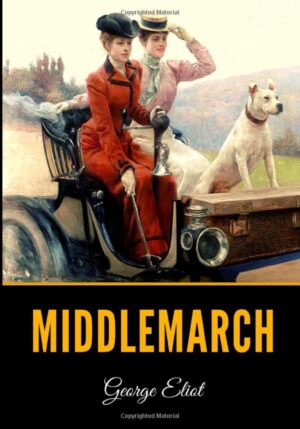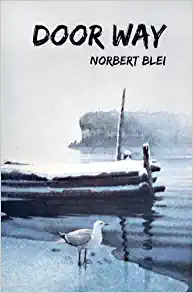
Minnesotan. Iconic member of the Paris scene from the days of Hemingway, Stein, and a host of other ex-pats. Husband to Zelda, whom some claim was the real, if tortured, genius in the family. I’ve listened to this classic novel through Audible now at least three times and despite the familiarity such usage brings, even the third trip through Europe at the head of F. Scott’s pen was worth the time.
Love triangles tend to be, in real life and in literature, messy affairs (pun intended). In this, one of Fitzgerald’s most autobiographical works, Dick Diver, M.D., an up-and-coming psychiatrist from the States who survived WW I’s horrific trenches, becomes infatuated with Nicole, another American ex-pat who is being treated at the Swiss Clinic where Diver works. Originally, the scheme of the author’s storytelling included much back and forth, past and present, which, to the critics, made the storyline confusing and didn’t help sales of the book when it debuted in 1934. A later revision of the novel (the one I was listening to) was completed in the 1940s by a friend of the author’s using Fitzgerald’s notes to create a more linear piece of fiction. This later version of the tale is listed as one of the great novels of the 20th century.
The tortured romance between Diver and Nicole, whom the doctor eventually “cures” and marries, profiles Diver’s plunge into alcohol abuse and Nicole’s re-emergent psychosis (either schizophrenia or manic-depressive disorder), as well as the doctor’s brief yet destructive affair with young American actress, Rosemary. Though Dick is the mature one in the tryst, it is Rosemary’s strength of character, and Nicole’s eventual recovery and affair with soldier-of-fortune Tommy Barban that convinces the disintegrating doctor that his marriage, and his time with Rosemary are over. The writing is crisp and moves with rapidity, mirroring the “Jazz Age” vintage of the work. One comes away from the tale’s ending wishing that, someway, somehow, Fitzgerald’s friends could have saved he and Zelda from disaster, a disaster foreshadowed in this novel. But such was not to be …
5 stars out of 5. A classic tale of hubris, lust, longing, and downfall.

I’ve not read Mary Evans (pen name, George Eliot) before so I thought I’d give a listen. This is a very long audiobook: coming in at over thirty hours, perfect for listening to when walking the track at the local YMCA. Eliot weaves a comprehensive tale of life in the fictional English village of Middlemarch during the early-19th century (circa 1820s-30s), a time when, despite having lost the United States as a colonial territory, the Brits rule the waves and most of the world. In this lengthy, sprawling, domestic novel, Eliot centers her prose on a fairly remarkable young woman, nineteen-year-0ld Doreathea Brooke, who marries a man of means, Rev. Edward Casaubon, a codger nearly thirty years her senior. Casaubon is the most unloveable of the myriad characters Eliots sets upon her stage: an old fuddy-duddy who, given his youthful bride’s beauty, is convinced Doreathea is in love with a vagabond traveler, Will Ladislaw, a distant cousin of her husband’s. Though those suspicions are not, at that point, based on fact, Casaubon’s vitriol forces him to include provisions for disinheriting his wife should she remarry Ladislaw upon the old man’s demise.
There are many other subplots and minor and major characters woven into the privileged, gentrified life of the plot’s principles. In its setting and characters, a reader might consider this to be the gentrified equivalent of Dickens. Each personage in the tale has his or her own story to tell and Eliot does a masterful job of merging varied storylines into a coherent, conclusive plot. While the language is, given the time period, somewhat foreign to today’s ear, and the setting of the tale in an English village is somewhat limiting in terms of the social and economic backgrounds of the characters, I found the book, as a whole, very satisfying, and well worth time spent walking the Y’s track to find out what happens to Doreathea and her companions.
4 stars out of 5

Finally, to prove I still actually read the written word, there’s this collection of essays written in the late 1970s and early 1980s by former newspaper and Door County (Wisconsin) resident Norbert Blei, to consider.
Last fall, as the leaves on the maples, oaks, aspen, and birch turned to glory, my wife René and I towed our travel trailer to a destination we both had never explored: the tourist mecca of northern Wisconsin, Door County. We camped at the KOA just south of Sturgeon Bay, the largest municipality on the peninsula, and by bicycle and car, explored the apple orchards, vineyards, fishing villages, and eateries of the storied county. At the infamous Al Johnson’s Swedish Restaurant in Sister Bay, I picked up this book while perusing the restaurant’s gift shop while waiting for a table. I was not disappointed by the food nor Blei’s prose.
Each chapter in th book is a vignette of someone whom Blei became acquainted with when he moved from Chicago to the county in the late 1960s. Some, like painter Charles “Chick” Peterson, a watercolorist, are internationally known. Others, like neighbor Charley Root, are simply, in the truest and kindest sense of the word, characters who the author became close to before his death in 2010. Many of the pieces were published as newspaper articles or profiles during the author’s lifetime but only later were compiled into a comprehensive volume with the assistance of editor and publisher David Pichaske. I always love buying quality local fiction or creative non-fiction when I travel. It allows for a more in-depth inquiry into the places that René and I visit. In that respect, this collection is well worth reading by anyone traveling to or staying in Door County.
Throughout Blei’s essays, the theme of inexorable progress, the gentrifying of a water-contained thumb of land thrust into Lake Michigan, surrounded on three sides by Green Bay and the vastness of the lake, is a constant refrain. But it’s not only the landscape that is changing, day by day, acre by acre, as more restaurants and condos and shops squeeze out fishermen, dairy farmers, orchards, and ordinary working folk living in the place:
The specifics of melancholia Chicago set in. How do I look these days? Strange, strange. That’s one of the last changes to take effect, though Door worked on the dress of the former Chicagoan from the very beginning. Back-t0-earth can play havoc with a man’s manner of dress-a whole wardrobe goes to seed. I hardly recognize myself these days …
If you are at all interested in the changing of rural America into something folks who passed on just a generation ago might not recognize; if you have any interest in visiting Door County; or if you’ve been to this still somewhat (despite the progress lamented by Blei) removed and rural piece of Wisconsin to fall in love with the God-painted leaves, flights of noisy Sandhill cranes flying overhead and landing on neighboring fields by the thousands, or platoons of grim, serious fishermen and fisherwomen lining the lazy rivers of the county in hopes of latching on to gigantic Chinook salmon during their fall spawn, well then, these stories are for you.
5 stars out of 5.
Peace
Mark


